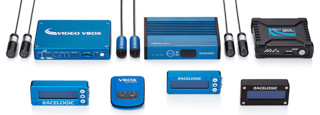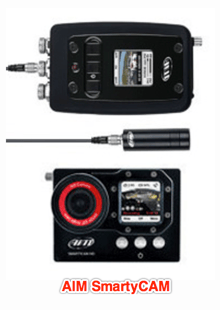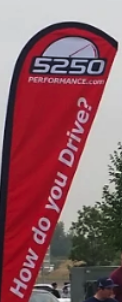 Data Acquisition and Why | Now that you know what sensors are on your vehicle and how they work, what do you do with them?
Data Acquisition and Why | Now that you know what sensors are on your vehicle and how they work, what do you do with them?
All that data is useless unless you can do something with it. Many gauges have a “peak hold" feature.
When you press this button, the gauge will show the highest reading since it was last reset. While it may be great to know you spiked to 30psi instead of your target of 22psi, you don't know when that happened or if it happened more than once.
Having your water temp gauge tell you it hit 236*F isn't helpful if it only did that for 30 sec then dropped.
You need some way to log all that data. Many programmers, like a COBB AccessPort, have the ability to log data from the OBD system. This means any sensor already connected to the car can be logged and compared to other sensors and time.
By having a log of boost over time, you can see how many times it spiked and for how long. But an OBD logger can only log data from the ECU. If you have added sensors the car did not come with, like a Wideband Air to Fuel Sensor, it's data will not be included in the log.
For a performance street car, extra data sets might not be critical. Since most tuning is done in a closed environment, like on the dyno, a mental note can be made of the wideband and then compare that to the log of the rest of the data. It's not critical to get everything to 101%. In fact, at 95%, the engine might last a lot longer.
- A performance built race car is a different story. Winning is everything, otherwise, why are you there?
Feedback is critical for improvement | A race car and driver will utilize a complete data logging system. This system will incorporate a dash display for the driver, all the inputs for all the sensors you could ever want, telemetry and video.
Anything less is just winging it, especially if your goal is to get better, faster and more efficient. That leads to more wins, and better skill sets.
The telemetry and video are what truly separate a race car logging system from a street car logging system. By having a location with a timestamp, the logging system can make a virtual drawing of where you are going. If it determines you are on a race track, it will start calculating lap times and sector speeds.  The camera video feed and all the data from the various sensors are timestamped. When you look back over the data, you know where you were on the track at any given point. This helps determine things like why the engine gets hotter around turn 3 than turn 5. Looking back at the video, we can determine that turn 3 is a much slower turn and the radiator isn't getting as much air.
The camera video feed and all the data from the various sensors are timestamped. When you look back over the data, you know where you were on the track at any given point. This helps determine things like why the engine gets hotter around turn 3 than turn 5. Looking back at the video, we can determine that turn 3 is a much slower turn and the radiator isn't getting as much air.
Getting better in real time | The precise speed and timing data provided by a true logging system also allows the driver to perfect their driving line. The dash will display sector times and speeds and the driver can use that to perfect his line lap after lap, without having to leave the vehicle or talk to their crew.
The dash can be programmed to warn the driver if certain pressures or temperatures get out of range. By having all alerts at the same location, none will ever be missed while the driver is focused.
- Another advantage is the lack of physical gauges. Since everything is programmed into the dash, there aren't gauges everywhere to distract the driver. Only the most important 3 or 4 virtual gauges are displayed on the dash.
- If there is a problem with a less important sensor, the dash will display it only when it’s relevant, allowing the driver to focus on their race, not the gauges.
There are even benefits for the crew. These newer logging systems have incorporated wireless communications. This means that the crew can be monitoring all of the sensors live while the vehicle is on track. This used to be technology only available to pro teams, but can now be afforded by the weekend racer. A driving coach can offer instruction to the driver without bringing them off the track to discuss strategy.
The crew can make suggestions to the driver and see real time feed back if it's making a difference. For example, asking the driver to short shift to lower temps, then knowing when they can drive normal again once things have cooled down. The crew can monitor fuel consumption and plan pit stops, leaving the driver better focused on driving
- All good data acquisition and logging systems are scalable.
- This means that we can put a basic system in your street car without breaking the bank and add components as needed.
Since most race cars were once street cars, this is a great way to build up your skill while also protecting your engine.
The cost of a set of 6 standalone gauges and pods is equal to a basic datalogging system. It's much more capable and can help lower your lap times.



